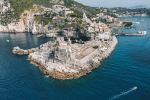

Taranto
Taranto is a city on the coast of the Ionian Sea in Southern Italy. It is situated between the bodies of water named Mar Piccolo and Mar Grande.

Seville
Must-sees in Seville include the landmark palace Royal Alcázar of Seville, the Gothic, bell-towered Catedral de Sevilla, and Plaza de España, an architectural marvel with Moorish, Baroque and Renaissance influences. Meanwhile, Museo del Baile Flamenco is the place to learn about flamenco dancing culture.

Sacred Valley
The Sacred Valley, located in the Andes and divided by Urubamba River, was part of the larger Inca Empire, along with Machu Picchu and the closeby town of Cusco. Tourists will see green agricultural landscapes and Spanish hamlets like Ollantaytambo and Pisac, the latter featuring a Sunday market.

Yangon
Gleaming temples, traffic jams and bustling commerce are all part of Yangon (previously Rangoon), Myanmar's biggest city. Eat at exciting new restaurants, shop at open-air markets and gaze upon the gilded Shwedagon Pagoda. Visitors should also hop on the Yangon Circular Train, where hidden places are revealed, and guides further educate passengers about Yangon's local life and culture.



